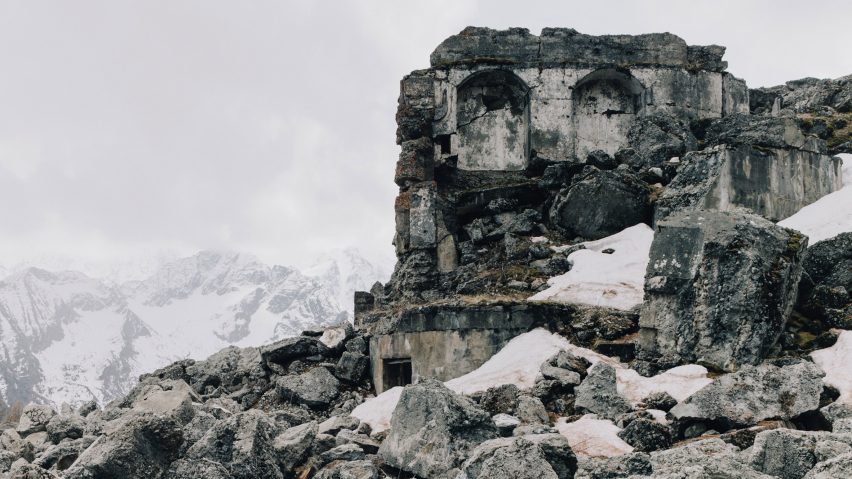British photographer Marc Wilson has produced an image series exploring the ruins of forts and trenches from the first world war, in the mountains of northern Italy.
The photographs feature in Remnants, a book that Wilson has published in collaboration with Italian architect and researcher Marco Ferrari. The project is a follow-up to The Last Stand, a book that Wilson produced in 2015 exploring similar structures on the coastlines of the British Isles and northern Europe.
In each image, physical traces of war – including trenches, fortifications and battlefields – appear to have merged with natural elements and become part of the topography.
Wilson and Ferrari hope to show that these structures are not just remnants of history, but indicators of how humans may one day live more in harmony with the natural world.
"The foundations of the project were rooted not only in the historical aspect of these first-world-war mountain forts, but also in an ecological perspective," Wilson told Dezeen.
"These man-made forts, created more than a century ago, have become part of the fabric of the natural landscape they once defended," he said.
In a Dezeen exclusive, Wilson has selected six of the most memorable sites he visited. They are pictured here with their accompanying captions:
Spitz Levico
Also known as Forte Vezzena, Spitz Levico's nickname was "the eye of the plains", referencing its main function as an observatory.
At 1,908 metres, it sits above Forte Busa Verle and together they formed the northernmost line of defence.
Forte Zaccarana
At 2,116 metres, the concrete-built Zaccarana, also known as Forte Tonale, was the highest and most advanced fort in the Tonale Valley.
Designed to block the Sole and the Strino Valleys together with Forte Pozzi Alti, it was almost entirely obliterated by heavy bombardment from Forte Corno d'Aola, the only Italian fort on the border.
Forte Dossaccio
Despite its location close to the front line, Dossaccio was decommissioned by 1915 and its four cannons relocated to nearby woods.
Primarily designed for long-range combat, it stands at 1,838 metres and was connected to the Buso and Moena forts by telephone.
Forte Dosso del Sommo
Perched at 1,665 metres and completed in 1914, Dosso del Sommo's function was to block the Terragnolo Valley and the Borcola Pass.
Three storeys high, it was one of the greatest of the Austro-Hungarian forts. At the start of the conflict it sustained heavy Italian fire but was never subjected to a full attack.
Forte Campo Lucerna
Due to its capability, the fort was nicknamed Padreterno – Eternal Father – by the Italians. After enduring devastating Italian bombardment at the end of May 1915, its commander, Emanuel Nebesar, raised a white flag.
As nearby forts fired on the Italians to prevent Campo Lucerna's capture, a volunteer made his way to the fort and tore down the flag of surrender. Subsequently arrested, Nebesar avoided a court martial for cowardice.
Forte Moena
Also known as Forte Someda, granite-built Moena was designed to impede advancement through the San Pellegrino Valley.
Standing at 1,276 metres, it was in telephone contact with Fort Dossaccio. Built between 1897 and 1899, it was considered obsolete by 1915 and its armaments moved to field positions in the San Pellegrino Pass.

